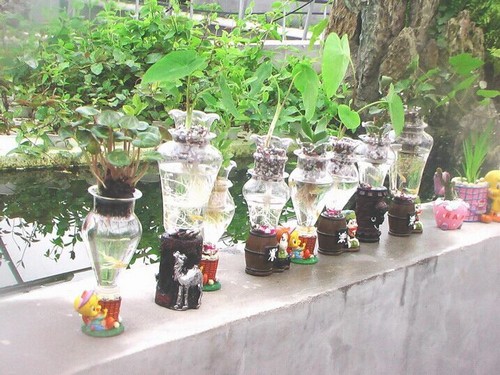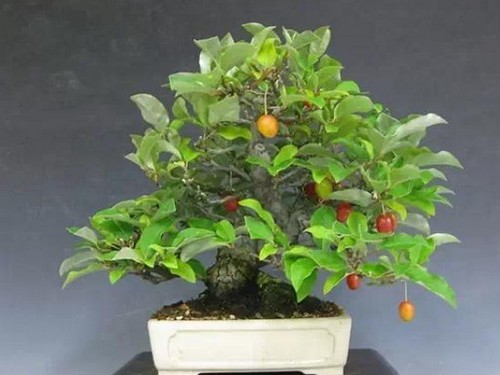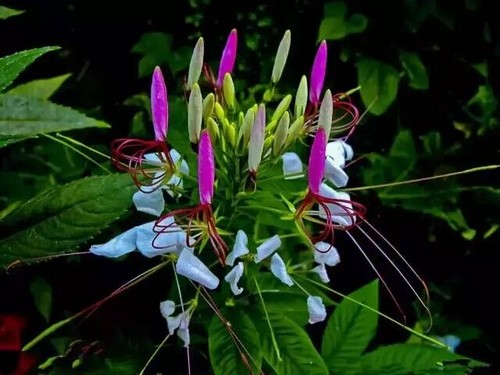Soilless cultivation techniques of Family Flower Bonsai
The soilless cultivation technology of flower bonsai is to put perlite, vermiculite or other light stones in the flowerpot (do not use plant decay, organic humus such as sawdust and cottonseed shell as cultivation substrate), and then add inorganic salt nutrient solution to cultivate flowers. The nutrient solution contains a variety of disinfection drugs, and the matrix in the basin is inorganic ore, so it does not breed insects, ants and bacteria; it also contains various elements needed for plant growth, which can make plants grow fast, plant strong, blossom more and early, big and fragrant, and resistant to cold and heat. Fewer diseases and insect pests.
Today, only soilless cultivation of flower bonsai can be exported to advanced countries; soilless cultivation of indoor plants is more suitable for high-end hotels, restaurants, shopping malls, office buildings and modern living rooms. The bonsai cultivated in soilless culture has a good prospect in the market. In addition, fresh cut flowers and vegetables are cultivated in nutrient solution greenhouse, which can improve the yield and quality and supply the market all the year round.

Soilless cultivation can make the plant grow rapidly, robust, blossom more and early, big and fragrant, and resistant to cold and heat, less diseases and insect pests. Generally easy to cultivate are tortoise-backed bamboo, Milan, gentleman orchid, camellia, rose, jasmine, rhododendron, kumquat, evergreen, violet, Phalaenopsis, inverted golden bell, five-needle pine, Camptotheca, rubber banyan, Brazilian iron, begonia, ferns, palms and other indoor and outdoor flowers bonsai.
Flower bonsai has changed from soilless cultivation to soilless cultivation, which can be carried out in any season.
The specific operation steps are as follows:
1. Prepare nutrient solution: dilute the water of soilless culture nutrient solution sold on the market according to the prescribed multiple. You can also use the following formula to prepare your own nutrient solution:
① large amount of elements: potassium nitrate 3g, calcium nitrate 5g, magnesium sulfate 3g, ammonium phosphate 2g, potassium sulfate 1g, potassium dihydrogen phosphate 1g
② trace elements: (applied chemical reagent) disodium ethylenediamine tetraacetate 100mg, ferrous sulfate 75mg, boric acid 30mg, manganese sulfate 20mg, zinc sulfate 5mg, copper sulfate 1mg, ammonium molybdate 2mg
③ tap water 5000 ml (5 kg). A large number of elements and trace elements are mixed into solutions and then mixed to form a nutrient solution. The amount of trace elements is very small, and it is not easy to weigh, so it can be prepared by expanding multiples, and then the amount can be extracted by the same multiple. For example, the trace elements can be weighed 100 times to become a solution, and then 1% of the solution can be extracted, that is, the required amount. The nutrient solution is non-toxic, odorless, clean and hygienic, and can be stored for a long time.
2. Take off the basin: use your fingers to push the root system out of the soil from the bottom hole of the basin.
3. Root washing: soak the root system with soil in water close to the ambient temperature to wash the soil in the rhizosphere.
4. Extract: soak the washed root in the nutrient solution for 10 minutes to fully absorb nutrients.
5. Pot filling and liquid filling: wash the flowerpot, place tiles or fill plastic yarn in the bottom hole of the pot, then put a little perlite and stone in the basin, then put the plant into the basin, fill the root system with light minerals such as perlite and stone, and gently shake the flowerpot so that the ore is closely connected with the root system. Immediately irrigate the prepared nutrient solution until there is an outflow from the bottom hole of the basin.
6. strengthen the root system: put pieces such as quartz stone and axe stone on the root system to strengthen the root system and avoid lodging. At the same time, spray some water on the leaves.
Time: 2019-05-25 Click:
- Prev

Cultivation techniques of Elaeagnus angustifolia bonsai
Elaeagnus angustifolia is a kind of bonsai tree with beautiful shape, beautiful leaves, rich flowers and bright fruit. Because its plant is small, it is often used to make medium, small or miniature bonsai. It is displayed on the desk, several shelves, etc., Qiu branch green leaves, plain flowers and red fruits, very beautiful. Spring and March is the most suitable for transplant.
- Next

Planting technique of potted drunken butterfly
The pedicel of the drunken butterfly flower is long and sturdy, the raceme forms a luxuriant flower ball, the flower shape is beautiful and chic, the petals are reunited like a fan, the stamens protrude like claws, the shape is like a butterfly, the flower color is delicate and beautiful, it is pink at first, turns pink for the second time, then turns purplish red, one flower is multicolor, has nectaries, and often intoxicates the flying butterfly, hence the name.
Related
- Fuxing push coffee new agricultural production and marketing class: lack of small-scale processing plants
- Jujube rice field leisure farm deep ploughing Yilan for five years to create a space for organic food and play
- Nongyu Farm-A trial of organic papaya for brave women with advanced technology
- Four points for attention in the prevention and control of diseases and insect pests of edible fungi
- How to add nutrient solution to Edible Fungi
- Is there any good way to control edible fungus mites?
- Open Inoculation Technology of Edible Fungi
- Is there any clever way to use fertilizer for edible fungus in winter?
- What agents are used to kill the pathogens of edible fungi in the mushroom shed?
- Rapid drying of Edible Fungi

